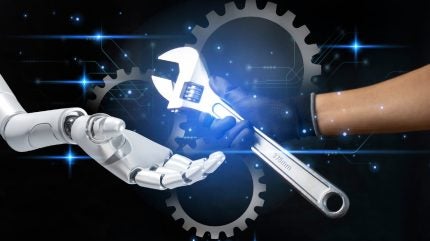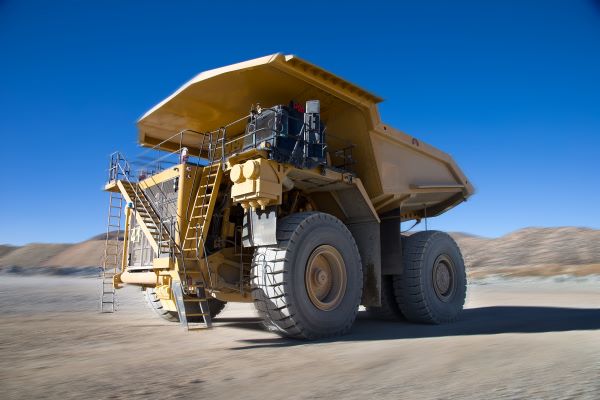
Once defined by labour-intensive practices and rudimentary mechanisation, the mining industry has been transformed by Mining 4.0, a technological revolution driven primarily by automation, artificial intelligence (AI), the Internet of Things (IoT) and digital twins.
However, as the limits of this digital paradigm become apparent, including its energy demands and human factors considerations, mining is entering a new era: Mining 5.0.
This new evolution does not replace Mining 4.0, but enriches it by placing environmental management, man-machine collaboration and ethical responsibility at the heart of the industry. Mining 5.0 will chart the path towards a greener, smarter and more human-centric mining future.
Mining 4.0: the digital core of resource extraction
Unlike earlier mechanised leaps that boosted output while retaining traditional workflows, the Mining 4.0 era redefines mining through interconnected systems and predictive capabilities.
Automation, demonstrated through driverless haul trucks, autonomous drilling rigs and robotic sorting, has cut costs and improved safety by reducing human exposure to hazardous zones. Rio Tinto’s Autonomous Haulage System, which includes more than 130 self-operating trucks at its iron ore mines, exemplifies this: each truck is able to operate for 700 hours more than its conventional counterpart, cutting costs by 15% and boosting productivity, according to the mining company.
AI and big data analytics propel this transformation even further, processing vast datasets to predict equipment failures and optimise workflows.

US Tariffs are shifting - will you react or anticipate?
Don’t let policy changes catch you off guard. Stay proactive with real-time data and expert analysis.
By GlobalDataDigital twins – virtual replicas of physical assets – enable scenario testing, allowing mining companies to refine operational strategies in a risk-free digital environment before deploying them in physical operations.
Meanwhile, IoT sensors embedded across mine sites monitor everything from equipment vibrations to air quality, enabling real-time decision-making and supporting regulatory compliance.
These advancements, dubbed Mining 4.0, address a trifecta of challenges: volatile commodity markets, safety risks and environmental pressures. This is particularly important as mining is estimated to be responsible for 4–7% of global greenhouse gas emissions.
Yet, Mining 4.0’s promise is not without its problems. Its energy-intensive digital infrastructure, such as high-density data centres, offsets some efficiency gains, while water recycling solutions, although innovative, also require significant power. The World Resources Institute warns of worsening water stress by 2040, suggesting that without broader adaptation, Mining 4.0’s benefits may falter amid resource scarcity.
Although safety has improved and mining fatalities have declined since 2012, automation risks displacing workers, particularly in developing economies where reskilling is lagging.
The emergence of Mining 5.0
It is in this context that Mining 5.0 emerges. This new era is not a replacement but a vital complement to Mining 4.0, addressing its gaps by prioritising sustainability and human agency.
Although Mining 4.0 excels in efficiency and digital integration, it often sidelines the industry’s ecological footprint and workforce dynamics. Mining 5.0 reframes this narrative, embedding environmental responsibility and human-machine synergy at its heart.
Sustainability is at the forefront of this new age of mining, with initiatives such as electrification and the adoption of renewable energies being integrated into operations.
Autonomous mines powered by solar, wind or hydrogen reduce carbon emissions, while AI can optimise water and energy use. This is crucial in water-stressed regions where mining often competes with agriculture.

Credit: BETO SANTILLAN/Shutterstock.
Unlike Mining 4.0’s tech-centric focus, Mining 5.0 ensures a human-centric approach where humans oversee strategic decisions and ethical considerations. Blockchain enhances this vision, offering transparency in raw material supply chains with human monitors ensuring accountability.
Automation improves working conditions by eliminating repetitive, dangerous tasks, but Mining 5.0 goes further, positioning workers as supervisors and analysts of advanced systems. Continuous training equips them to manage cutting-edge technologies and navigate ethical dilemmas, fostering a workforce that is both skilled and empowered. It is this harmony, where technology amplifies human potential rather than replaces it, that defines Mining 5.0.
Real-world examples hint at this future. For instance, BHP has invested heavily in solar power and autonomous haulage, while Vale has used blockchain in its sales of iron ore. These efforts illustrate Mining 5.0’s potential to harmonise profitability, planet and people.
Powering the future of mining
The road to Mining 5.0 is promising but fraught with challenges. Widespread adoption demands hefty investment in infrastructure including renewable energy grids, electric fleets and training facilities. This investment may place strain on smaller companies or developing economies.
Regulatory frameworks must evolve to incentivise sustainability without stifling innovation, a delicate balance given mining’s global diversity. Technological integration also requires cybersecurity upgrades to protect interconnected systems from cyberattacks or data breaches.
Workforce transition poses another hurdle. In high-income nations like Canada, reskilling programmes thrive; in informal mining hubs like sub-Saharan Africa, they are scarce, risking inequality. Mining companies must bridge this gap, investing in education and local capacity-building to ensure Mining 5.0 benefits all stakeholders.
Yet the prospects for this new age of mining are compelling. Companies embracing Mining 5.0 can lead in decarbonisation, meeting investor and societal demands for greener practices. Enhanced transparency via blockchain could rebuild trust with communities and regulators, while a skilled, engaged workforce can drive long-term resilience.
Mining 4.0 laid the digital foundation, revolutionising efficiency, safety and operations. Mining 5.0 builds on this, weaving sustainability and human empowerment into the industry’s foundations.
Together, they usher in a new era where mines are not just smart but also responsible. For mining companies, the transition demands bold investment and vision, but the reward is a future-proof industry poised to thrive in a resource-constrained world.

About the author: Bassma Azzamouri is an assistant professor at the Geology and Sustainable Mining Institute, University Mohammed VI Polytechnic (UM6P – Benguerir). She holds a PhD in management sciences from the University of Rennes in France and an engineering degree in industrial management from EMINES-School of Industrial Management, UM6P in Morocco.





